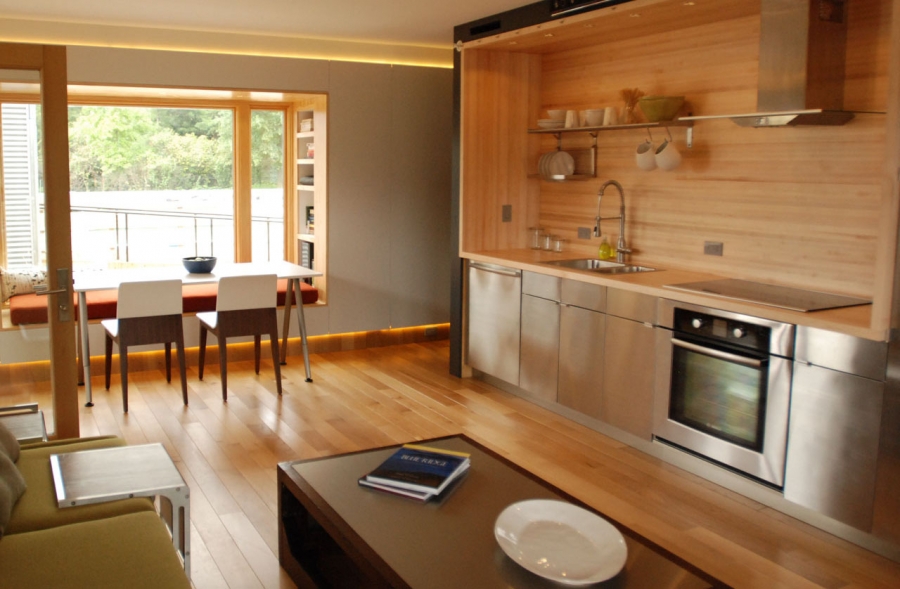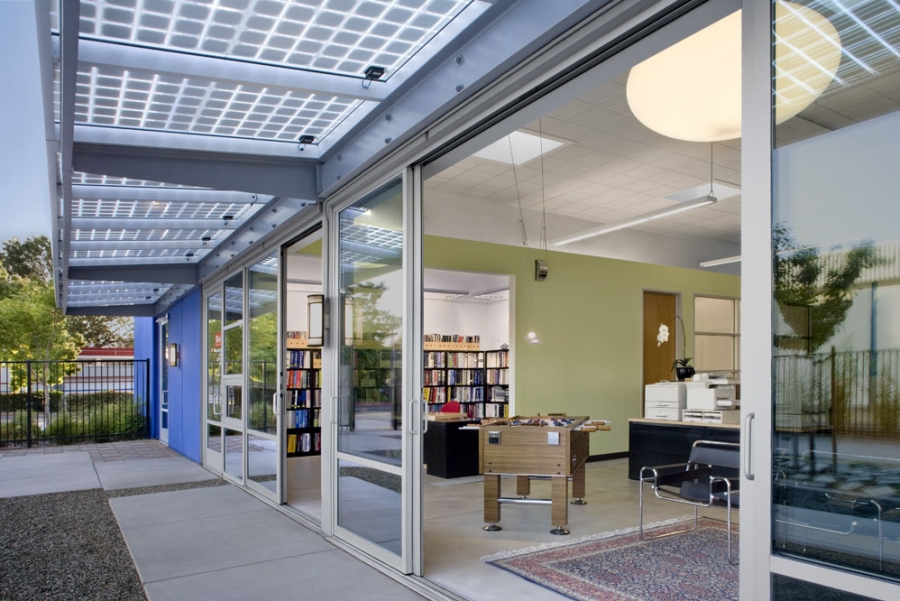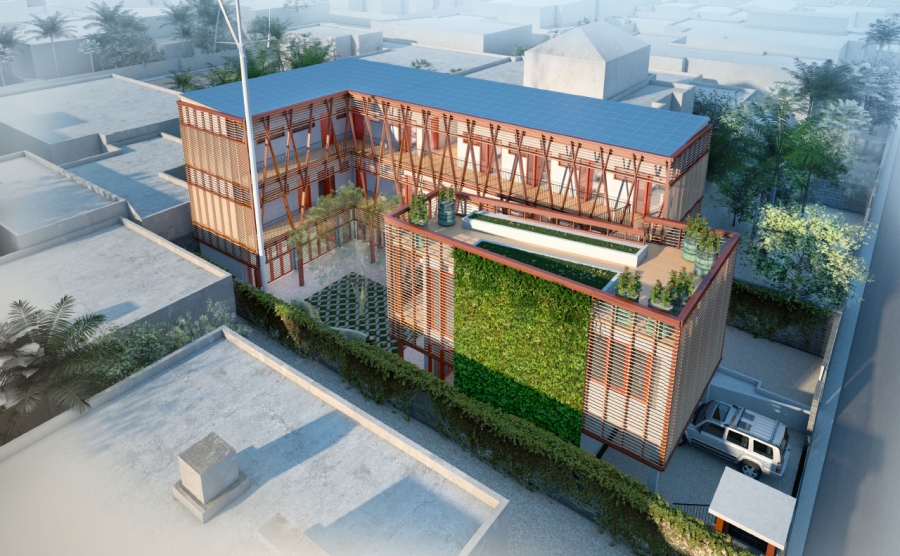Vertical Gardens
Video
Many buildings are literally going green. The addition of a vertical garden, whether interior or exterior, has many benefits.
The benefits of gardening are numerous, but gardening also requires land – something that many commercial and urban settings lack. However, vertical gardening is a fairly simple way to enjoy the aesthetics of plants within a limited space. Vertical gardens grow upward alongside building exteriors and interior walls, creating captivating scenery where it would otherwise be impossible.
Vertical gardens, or green walls, feature living plants. The design and purpose of vertical gardens run the gamut – from elaborate designs that scale towering buildings and are installed simply for aesthetics to smaller gardens that are intended to provide locally grown food for the surrounding community.
Benefits
The benefits of vertical gardening are abundant. A vertical garden can substantially reduce a building's energy demands by providing increased shade and insulation, and reduces the need for maintenance, as it provides a shield of sorts from exposure to the elements. In addition to shielding a building from inclement weather, the plants of a vertical garden alleviate sound pollution and Urban Heat Island Effect (increased heat within urban areas due to land modification and the use of materials that retain heat), according to Urban Habitat Chicago, an urban agriculture design and education firm. The introduction of plants on a large enough scale can improve the air quality of the surrounding community. Vertical gardens also increase local biodiversity and improve the morale of those who live, work, and play in the community.
Vertical gardens can also help to stimulate secondary and tertiary economies, according to Urban Habitat Chicago. In addition to the people who must be hired to design, install, and maintain the gardens, funds can be generated from harvesting and selling locally grown food from the garden or that food can feed people within the community.
How Are Vertical Gardens Structured?
Not every space is suitable for a vertical garden. At a minimum, the space—both interior and exterior—should have an internal irrigation system, good drainage, access for regular maintenance, and an adequate support structure, according to Urban Habitat Chicago. Plants can be grown between layers of cloth and stapled in place on sheets of expanded PVC, according to Patrick Blanc, the French botanist and author responsible for popularizing the idea of green walls and vertical gardens. Once installed, hydroponics can be used to feed the plants.
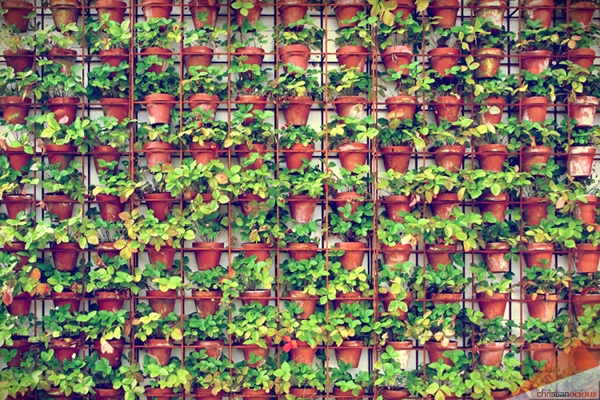
Interior vertical gardens require a little extra care, as supplemental lighting may be needed to simulate sunlight, and proper ventilation is required to ensure the steady growth of healthy plants. The interior wall should also be waterproofed, and extra care must be taken to keep the surrounding floors, walls, and ceiling dry.
Finding a Location
Locating the right spot for a vertical garden is rather simple, as long as the space meets the aforementioned criteria. Interior vertical gardens are ideal for hotel and corporate lobbies, as well as restaurants and retail stores. Indoor vertical gardens can also provide a sense of unity with nature for those who may not be able to go outside frequently, such as people staying in hospitals and nursing homes. Offices and school buildings are also ideal locations for interior vertical gardens.
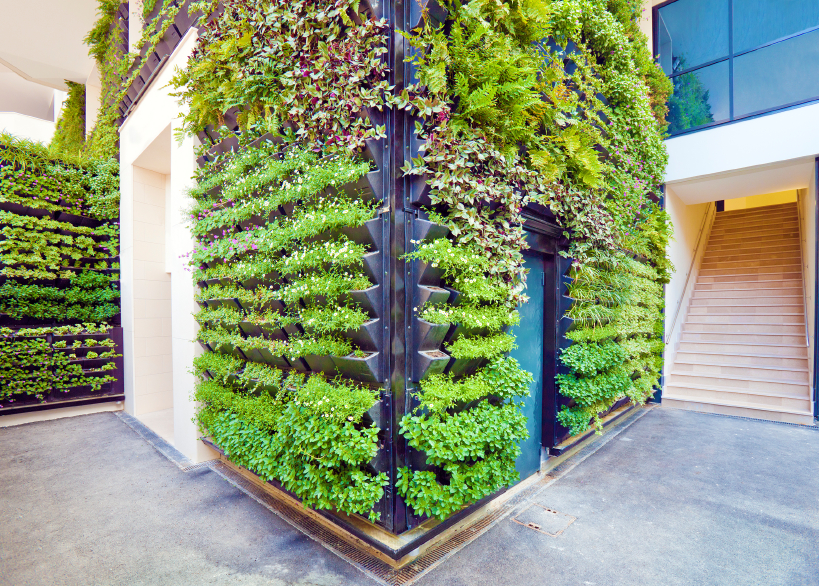
Since maintenance of exterior vertical gardens is a little easier, the ideal locations for exterior vertical gardens are many. Basically any vertical space that could use a little face-lift (and receives adequate sunlight) can benefit from the installation of a vertical garden.
The cost of a commercial exterior vertical garden generally ranges from $60–$160 per square foot, according to Urban Habitat Chicago. This cost includes the plants, internal irrigation, and installation but does not include associated maintenance costs. Internal vertical gardens are usually more costly, due to the need to waterproof the area and to design a system that will not damage the surrounding interior spaces. For both interior and exterior vertical gardens, the more elaborate the system and the design, the higher the cost.
Vertical Gardening Challenges
A few factors can make vertical gardening challenging. Finding adequate sunlight for exterior walls may sound simple, but different plants need varying amounts of sunlight. After selecting a wall, much consideration should be given to the types of vegetation that will work best together, on that particular wall. Additionally, hosing down plants will likely just moisten the plants, with the majority running off onto the ground, so an irrigation system must be used for optimum results. Irrigation systems with time-released fertilizer can help to give plants a boost and reduce maintenance. Although vertical gardening, just like traditional gardening, can be challenging, with proper installation and maintenance vertical gardens can thrive.

J. Mariah Brown
J. Mariah Brown is a technical research writer and the owner of Writings by Design, a comprehensive business writing service company that specializes in business development, promotion, and client outreach. She has worked in a variety of technical and non-technical industries including, but not limited to, Government, Non-Profit, Engineering, Translation and Interpretation, Christian and Women’s Publications, and Fashion and Beauty. She is a graduate of the prestigious E.W. Scripps School of Journalism at Ohio University and is currently pursuing a master's degree from Gonzaga University in Communication and Organizational Leadership.

